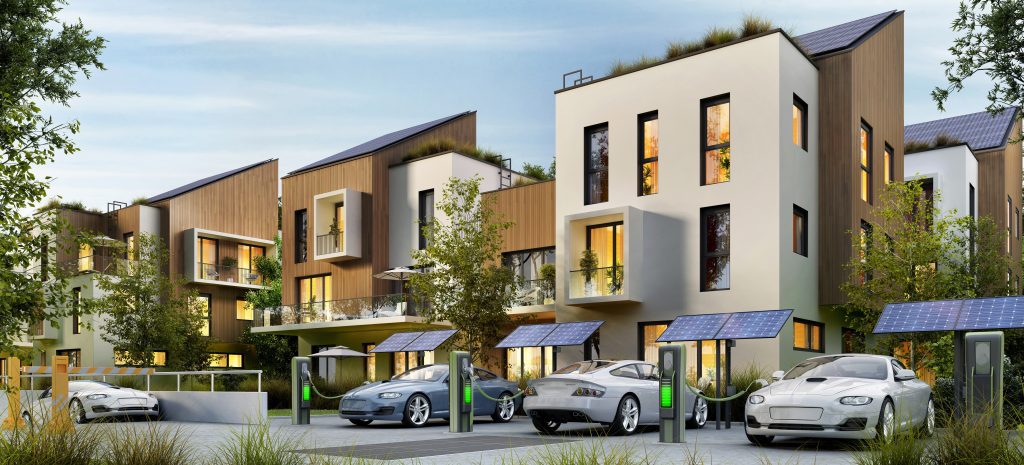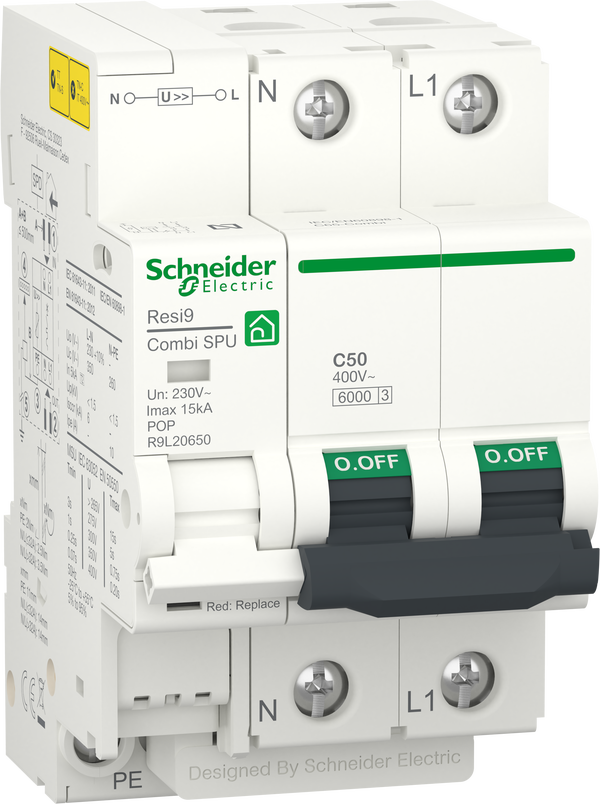In our last blog, we looked at the history of the electrical panel, and how this technology has developed over the past 100 years. In this next instalment, we’re exploring what the future holds for the electrical panel…

A massive increase in the electrification of our homes because far more appliances are now being used has resulted in electrical distribution becoming far more complex. Hand-in-hand with this transformation comes a potentially greater risk to electrical safety. For example, with sales of electric cars burgeoning, more people are using their home as the ‘fuel’ station which charges their vehicles.
The second big transformation that has taken place is how electricity is delivered. In the past, your home was solely powered by the grid. Not today – it is now served alternately by the grid, renewables from the grid, micro-grid, solar panels on top of a roof, a battery back-up or, very soon, your EV.

At the heart of this transformation is the electrical panel – the place to which electricity flows safely and securely into the home and is distributed across your loads. Not surprisingly, these two transformative changes are creating a big strain on the traditional electrical panel and hence, the need to re-invent it.
The electrical panel has always been there to ensure the safety and security of goods and people against electrical hazards in the house. The multiplication of loads – linked to electrification – coupled with the new energy landscape are bringing new safety and security concerns that people may not have considered.
So, how does the electrical panel need to evolve to continue to play its safety and security role?
How much do homeowners know about electrical panels?
A recent consumer survey revealed the following interesting statistics:
- 29% of consumers don’t know what the role / function of the electrical panel is in their homes. This rises to 41% amongst the 18-34 age group.
- 16% of consumers have no clue where the electrical panel is in their home. Amongst 18-34 year-olds, this figure jumps to 25%.
- Almost half of consumers (48%) think that their electrical panel would need an upgrade (or a change) if adding solar, battery or EV.
- Interestingly, whilst the younger generations are less aware about the role of the electrical panel, they tend to be more conscious of the need for upgrades in the new energy landscape (52%).

When home appliances are running smoothly and efficiently, we don’t spare a thought for the electrical panel. However, the seemingly ‘boring’ hidden box – perhaps located in your garage or tucked away in a cupboard somewhere – is set to become a much more important part of our lives as the electrification of our homes intensifies. Not only will allow us to mastermind the use of electricity from a variety of renewable energy resources, but it will also be crucial when it comes to communicating with the electrical grid.
What will be required from electrical panels of the future?
The electrical panel has always been there to ensure safety and security of our homes, its occupants and the appliances within it against electrical hazards. As the number of electrical loads in our homes increases and the electrification of the grid continues in the move to a more sustainable future, this brings with it new safety and security challenges for the electrical panel.
AC/DC current / Alternating Current vs. Direct current
Traditionally, homes were powered by AC and all loads used to be AC. Today, there are more and more appliances, such as tablets, smartphones or EV, that run on DC. Additionally, there is increasing DC current flowing in our homes via energy storage and solar. This means the electrical panel now needs to manage this new complexity too.
Digitisation of applications
Electricity is a powerful energy which can be monitored and controlled digitally. Digitisation will continue to open up new possibilities for the electrical panel of the future.
Increased energy tariffs
As energy costs increase, this will prompt many of us to consider how we can automatically prioritise energy consumption with a HEMS to run when energy tariffs are cheapest or when other sources are available – without the need for manual intervention.
The multiplication of sources of electricity also goes with bi-directional loads
For example, electric vehicles. With a 13% YOY increase seen in Q1 of 2023 according to Counterpoint’s Europe Passenger Electric Vehicle Model Sales Tracker[1], it’s clear more of us are installing these large-load chargers in our homes.
Today, you simply charge your EV with existing power. However, in the future, your EV charge will also serve as a battery storage and power back your home.
Maintaining safety
As more of us move to store energy in our homes through sustainable methods such as from solar panels, this can create a strain on the electrical panel. Say you have a home battery storage and the power cuts, the normal behaviour would be to power your house from the battery.
In a usual situation, a breaker is meant to break when there is a short circuit under a certain amount of current provided by the grid. However when powered by a battery, this level of current is not reached, which could mean the breaker might not trip under a fault such as short circuit leading to a power cut and creating complex troubleshooting operations. As such, it’s crucial that the electrical panel can maintain the safety and service continuity of the home in these instances.
What the future holds for electrical panels
There is no doubt the vital role that connectivity and digitisation is playing in the future housing landscape. As such, it’s clear to see that electrical panels of the future will play a key role. Not only will they help manage the electrification that comes along with making our homes more sustainable, and ensuring our grid doesn’t become overwhelmed, but will also be crucial in helping us all manage our energy use to reduce consumption and costs. At the heart of all this is a commitment to ensuring the safety and security of a given electrical installation.
Today’s generation has been brought up in an ever-changing techno landscape, and whether it’s social media, mobile phones, gaming machines or laptops, they are comfortable dealing with new technology and the software programmes or applications that come with it – so should have no problem managing the advanced electrical panels of the future!
For more information on our range of electric panels, circuit breakers or switches, contact one of our experts today using the online contact form or support centre.
[1] https://www.counterpointresearch.com/insights/europe-ev-sales-q1-2023/




Conversation
Very interesting and useful blog, thanks for sharing Michael !